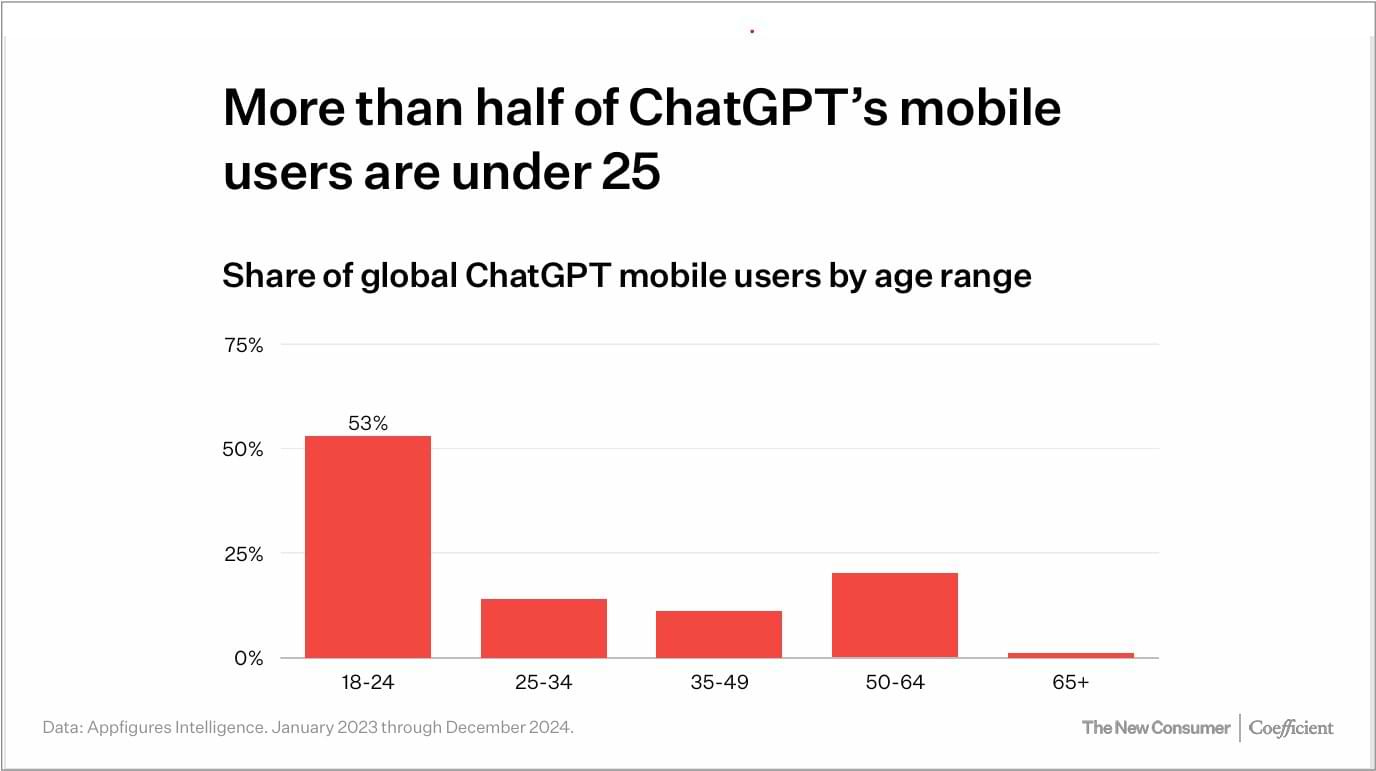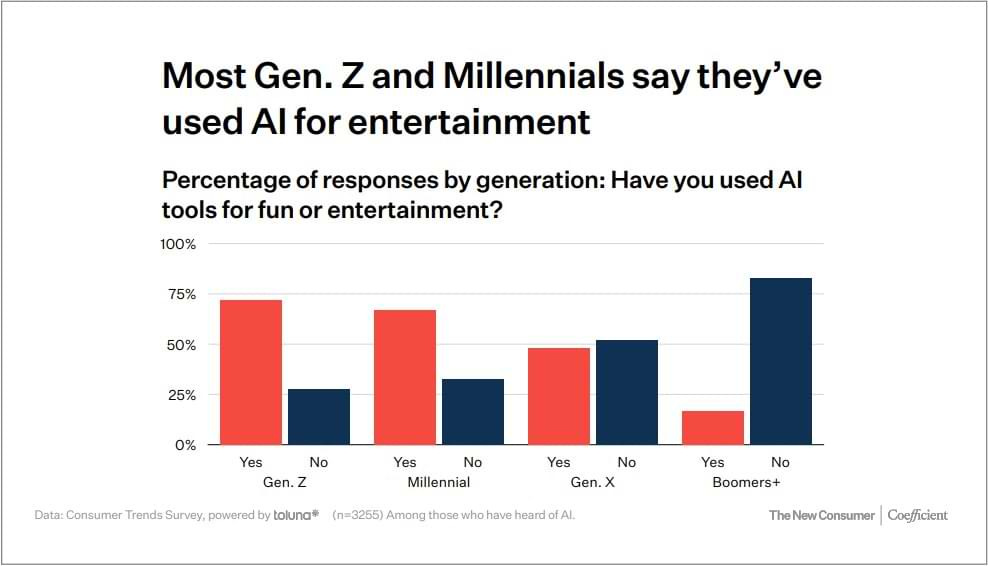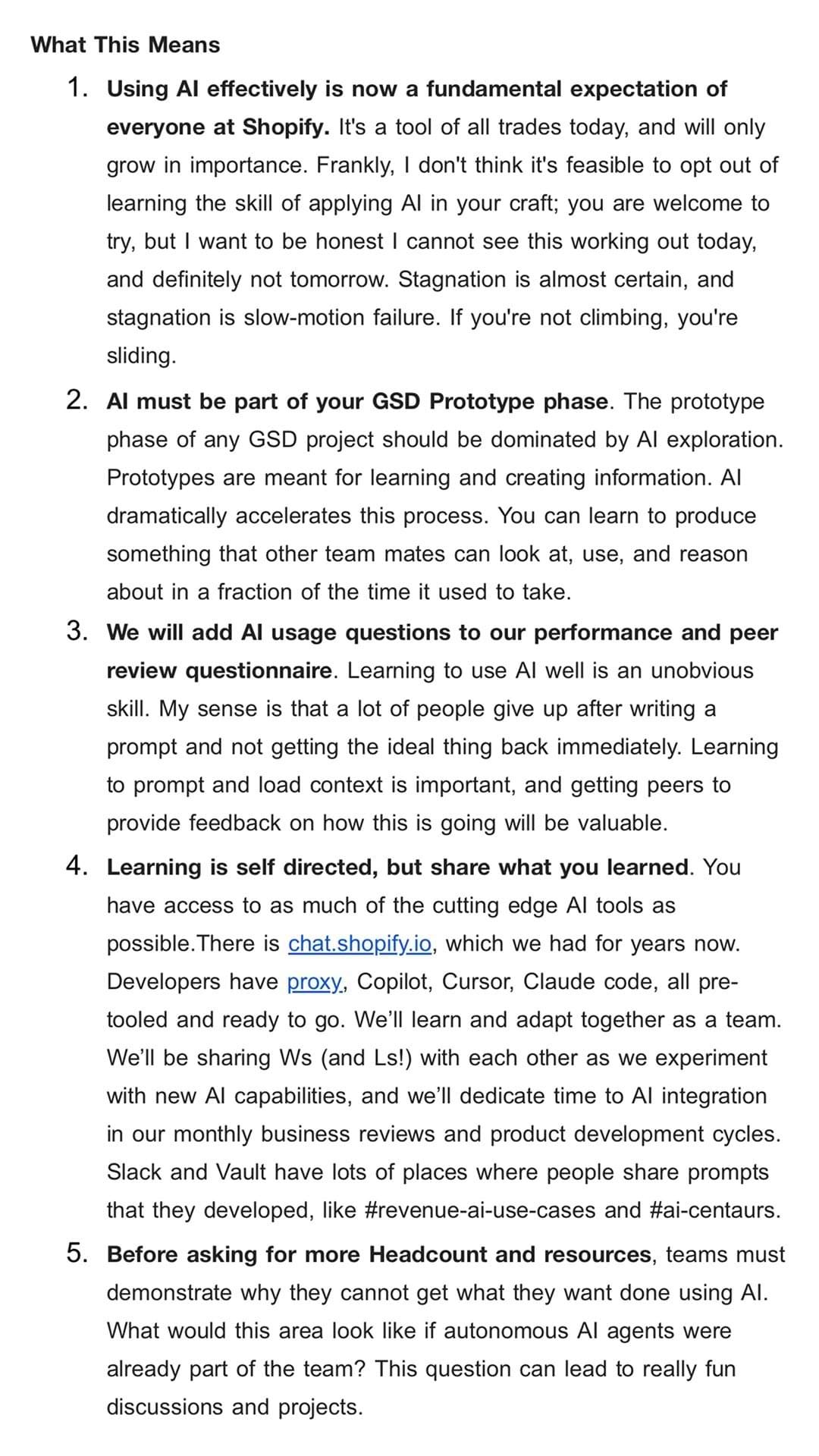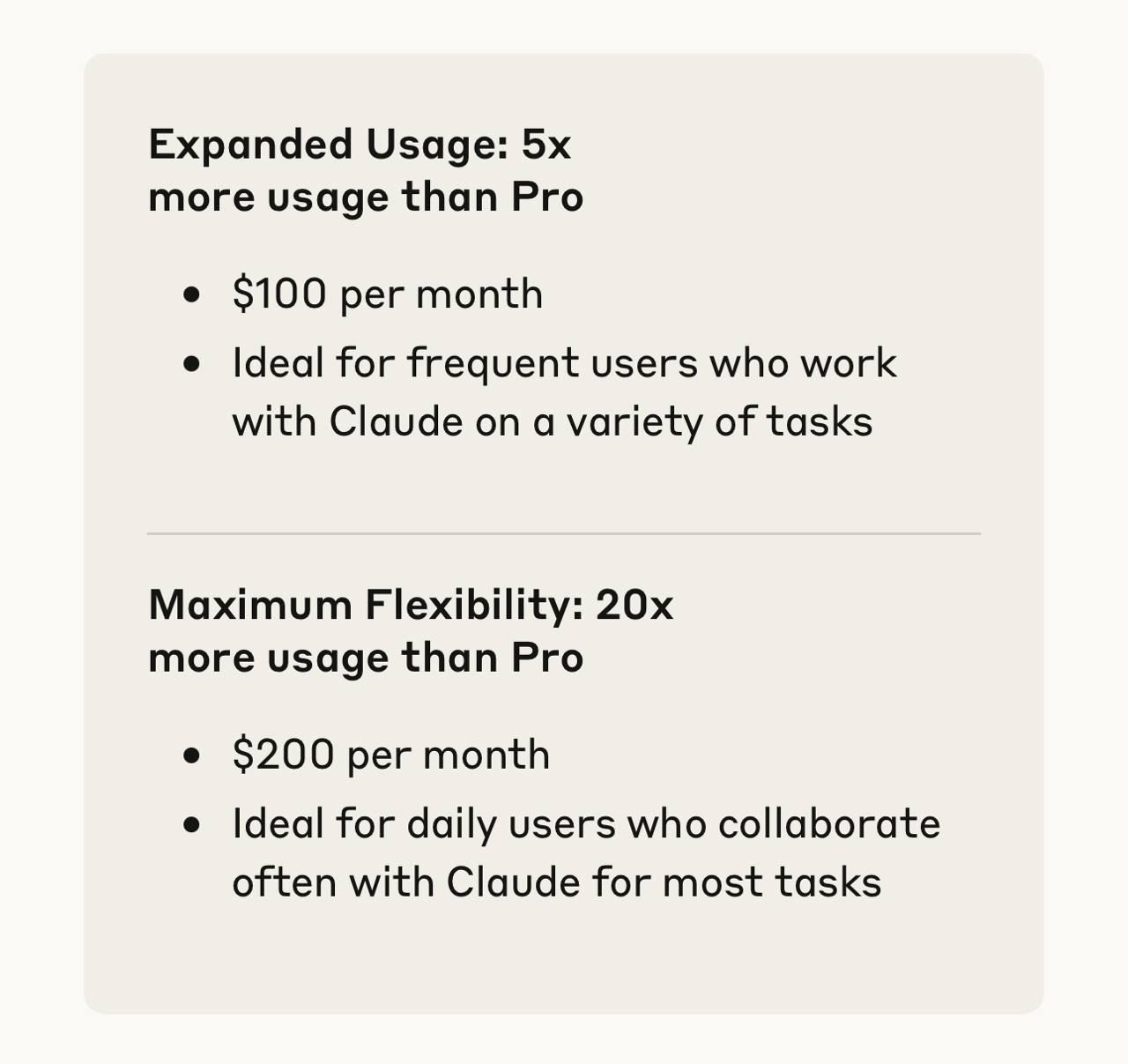🤓 For Gen Z, AI Isn’t Just Tech—It’s Culture
PLUS: This Week in AI
Quick heads up before we dive in.
You asked, and it’s happening—I’ve finally locked in the date for my next AI for Non-Techies workshop: Friday, May 2nd.
I wanted to share it with you as soon as it was confirmed, in case you want to hold the time.
This week, OpenAI launched Memory across conversations (details below), and is rumored to be releasing its most advanced reasoning model next week.
We’ve also gotten major new features like Projects and Deep Research, which make these tools even more powerful, capable, and genuinely useful for work—and life.
If you’ve been curious about AI but not sure where to start… or already working with tools like ChatGPT and Claude, this live-only session is designed to help you get dramatically better results.
With so many new models, features, and updates rolling out, it’s hard to keep up—let alone know what’s actually useful or how to get the most out of it.
We’ll focus on the most essential strategies and powerful capabilities, so you can start working with AI more intentionally and effectively.
If you're new to AI, you’ll leave with a solid foundation and the confidence to get started. If you’ve already been exploring, you’ll discover new techniques, insights, and use-cases to take your skills to the next level.
If you’ve joined a past workshop, think of this as both a refresher and a chance to catch up on all the updates and new features.
Check out full details at the bottom of the newsletter, and if you’d like to join, sign up below.
If you have question, hit reply and ask.
Ok, now back our regularly scheduled program.
Most companies still treat AI like a productivity tool, or a feature.
But younger audiences—the ones shaping taste and attention—already see it entirely differently.
It’s creative fuel. A collaborator. And even a means of self-expression.
But most importantly, it has become a key driver of their decisions.
AI search is becoming a trusted source, shaping discovery, engagement and influencing decisions in highly personal ways.
One recent study found that two-thirds of Gen Z and Millennials—closely followed by Gen X—already turn to tools like ChatGPT for product recommendations.
New research from The New Consumer offers more insights:
Younger consumers view AI as more than a helpful tool—it’s quickly becoming a medium.
They expect experiences powered by AI, from interactive storytelling to personalized streams, and they’re ready to pay attention to brands that lean in.
If your brand creates content, stories, or experiences—listen closely.
1. AI Is Becoming a Core Part of Youth Culture
More than 50% of ChatGPT’s mobile users are under 25.
Most Gen Z and Millennial consumers (60% +) say they’ve used AI for fun or entertainment.
Perhaps most surprisingly, younger consumers expect AI not to only shape the future of entertainment, but to dominate it.
Around 41% of Gen Z and Millennials believe AI will create most entertainment in 20 years (though my guess is far sooner than that), and 39% think AI will create the best entertainment.
2. AI Art Is Still Art—At Least for Half of Them
50% of Gen Z and Millennials consider AI-made art to be real art.
They’re also more open to interactive, AI-powered experiences that encourage self-expression.
3. AI as Trusted Confidant (And Recommendation Engine)
Gen Z is turning to AI for guidance on health, finance, travel, and relationships.
Their top use case? Film and TV recommendations. 🤯
AI isn’t just a search engine replacement; it’s becoming a conversation partner and a go-to place for deeper questions, brainstorming and advice.
4. A Generational Divide: Curiosity vs. Anxiety
Younger groups feel more curious or excited about AI, while older generations lean more toward worry or skepticism.
I’ve been thinking a lot about what all of this means for brands and marketers.
The rules are still being written, but here’s where I’d start:
1. Try using AI the way your audience is.
One of the fastest ways to fall behind is by outsourcing AI understanding to your agencies or vendors, or by waiting for next quarter’s research deck.
Behavior is shifting way too fast for the usual cycles to catch it.
And that’s actually okay—if you’re using the tools to stay as closely as you can to what’s changing.
You don’t need to master every model or prompt trick. But if you’re not personally using tools like ChatGPT, Gemini or Perplexity to explore how your audience is searching and making decisions—you’re flying blind.
📌 Try this: Ask a few questions your audience might ask:
“I like comedies and thrillers. I have a date this upcoming Friday and want to take her to the movies. What are my best bets and the pros and cons for each option?”
Then look at what shows up—and what doesn’t. Notice how responses are framed, what gets prioritized, and how follow-ups are handled. Keep going like a real user would.
Watching how these tools guide people through back-and-forth conversation is one of the fastest ways to understand how the decision-making process—and the consumer journey around it—is shifting.
It’s also where your blind spots in your current strategy will start to show.
2. Prioritize learning and experimentation.
This sounds obvious, but most teams still don’t understand the tools they’re soon going to be expected to build strategies around.
If you want to stay relevant with how quickly the tech and audience behavior are evolving, you can’t wait for finalized use cases.
You need people poking around, asking questions, figuring stuff out, and sharing what they’re learning along the way.
The reality is: these tools don’t come with instruction manuals.
Even the AI companies creating these systems are still uncovering unexpected capabilities—and the number of valuable use cases keeps expanding.
That’s why each team needs to experiment and explore how these tools might actually be useful to them.
But experimentation doesn’t have to be risky or chaotic.
You just need to create space for it—and set some guidelines and boundaries.
Start with training your employees on the fundamentals on how these tools actually work: their strengths, limitations, and how to get better results through smarter prompts and framing.
📌 Try this: Carve out an hour a week for low-stakes exploration.
No agenda. No pressure. Just test, play, compare notes.
Create an easy way for people to share what they’re discovering, swap examples and best practices, and raise smart questions. The learning happens faster when it’s shared.
If you want smart ideas, make it easy for people to play. And talk about it.
The brands learning and adapting now will be the ones with the real competitive edge.
—
P.S. If your team is in the process of figuring all of this out, and needs help, I know someone who’s great. Me. 😆
What You Need to Know About AI This Week ⚡
Clickable links appear underlined in emails and in orange in the Substack app.
🧠 ChatGPT Finally Got the Memory Feature I’ve Been Waiting For—And It’s a Big One
It can now remember useful details and context from previous conversations to make its responses more personalized and relevant.
The more you use ChatGPT ➡️ the more it learns about you ➡️ the more useful it becomes.
There are two types of memory, and you can control each via its own setting:
Reference Saved Memories: These are details you’ve explicitly asked ChatGPT to remember—like your name, job, or a preferred tone of voice.
They work a lot like Custom Instructions, except ChatGPT can update them automatically instead of relying on you to manage everything manually.
Unless you delete them, saved memories are always considered in future chats.
This feature isn’t perfect yet. Sometimes it remembers details I don’t actually want remembered—or things that aren’t important enough to take up space (especially since saved memories have a storage limit).
I’ve started checking mine weekly and clearing out anything that doesn’t serve me.I’ll walk through exactly how I manage this—and why memory is becoming such an important part of making ChatGPT feel more intuitive and streamlined—during my upcoming workshop.
Reference Chat History: ChatGPT can also pull relevant info from your past conversations to make current chats more helpful and personalized.
For example, if you once said you love Mexican food, it might remember that when you ask, “What should I have for lunch?”
Unlike saved memories (which are kept until you delete them), these details can change over time. ChatGPT updates what it remembers based on what’s likely to be most helpful.
It doesn’t store everything—so if there’s something you always want it to remember, use saved memory.
🔄 One important thing to keep in mind: as ChatGPT starts remembering more about each of us, our individual experiences will become harder to replicate.
Even if two people use the exact same prompt, they might get completely different results—because the model is adapting to each person’s context and history, and building on what it’s learned over time.
We already saw this with Custom Instructions, but memory will make this personalization even more noticeable.
--
This feature is currently rolling out to paid users (ChatGPT Plus and Pro) so you should have it within the next few days.
You can turn settings for both on or off anytime.
→ Go to Settings > Personalization > Memory
→ Toggle each feature on or off
Want to keep memory settings on but one specific conversation off the record?
Just start a Temporary Chat—those won’t be stored in memory or your chat history.
—
⚠️ Reminder: Turn Off Training with Your Chat Data
Now that ChatGPT can remember your conversations, it’s even more important to make sure your data isn’t being used for AI training.
(Yes, this is the same setting I shared last week for uploaded images—but it also applies to saved memories and chat history.)
→ Go to Settings > Data Controls
→ Toggle off “Improve the model for everyone”
Do this TODAY if you haven’t already.
👀 This Leaked Memo Reveals AI’s Role in the Future of Work
A leaked internal memo from Shopify’s CEO, Tobi Lutke, just made its way around the internet—and it says more about where work is headed than most AI trend reports combined (See images 👇):
Everyone, including the executive team, is now expected to use AI effectively—across all functions and levels.
AI must be part of product development from day one.
Learning is self directed.
AI skills will be factored into peer and performance reviews.
Teams must try solving problems with AI before asking for more headcount.
This is a signal of how fast expectations are shifting.
The smartest leaders I know already use AI to brainstorm, strategize, think through complex decisions, and sharpen their communication.
And many of them are quietly shifting how they evaluate and hire candidates—looking for people who know how to work with AI, not just talk about, or around it. 😁
Now, maybe your company isn’t moving this fast.
But if it limits your access to the top AI tools—or even actively discourages or bans their use—you’re not gaining the experience you need to stay competitive.
And that skill gap is only getting wider every month.
While you can’t control your company’s pace, you can be proactive and start learning.
You don’t need to become an expert.
But you do need to learn how to apply these tools inside your own area of expertise.
📌 Here’s where to start:
Find trusted sources for AI training.
Start small. Pick one task. Spend 20 minutes a day experimenting with how AI could support it.
Develop instincts around when, how and which AI tool to use for specific projects and tasks.
Keep experimenting to refine how to integrate AI in your actual workflows.
If your leadership isn’t saying it out loud yet, that doesn’t mean it’s not coming.
This memo just got there first.
Anthropic launched Claude Max subscription plans with higher usage limits. Pricing details below 👇
If you ask me, I’d still go with ChatGPT Plus. You get a lot for that $20. It’s hard to beat.
⚔️ Google is using aggressive non-competes to keep AI talent from rivals.
In the race to dominate AI, top researchers are the most valuable asset—and in this field, even a month on the sidelines can set you back a year.
Google DeepMind is locking employees into contracts that block them from joining competitors like OpenAI or Microsoft for up to 12 months. Some are paid during this period but can’t accept roles or work.
Most of us wouldn’t mind getting paid not to work for a while. But in a space moving THIS fast, even a short break means losing context, critical insights, momentum, and the signals you need to make smart decisions.
Honestly, I’ve never seen anything like it.
I haven’t taken a week off in the last two years and I’m barely keeping up.
Barely.
I do really love it though. And that helps—A lot.
💡 There’s a new technique for AI video generation—and it’s a big one.
UC Berkeley researcher Karan Dalal shared his team’s approach for turning simple prompts into minute-long videos, with consistent characters across multiple scenes.
That’s a major leap. Most current models can only create seconds-long clips.
Each video was generated in a single pass, without editing or post-processing. 🤯
Breakthroughs like this can come from anywhere. What looks defensible one day might not be the next—which is exactly what makes this space so unpredictable for startups.
Most companies are building around capabilities that can become obsolete within months.
And shockingly, some of the most heavily funded AI startups—and their VCs—don’t seem to deeply understand the underlying tech or have a sense of what’s coming next.
Granted, this is unbelievably challenging to do. But it’s a non-negotiable if you want to survive.
Still, that’s also what makes this space exciting…Which also explains why I haven’t been able to take a week off. 😁
Or bet on one business idea of my own (though I’ve been advising plenty of others with skin in the game).
All that to say, this drop is worth a look.
Here is one of the demos, but you can check out more here.
Google used generative AI to re-create The Wizard of Oz for the Las Vegas Sphere—a giant, wraparound screen that requires ultra-high resolution and wider visuals.
Because the original 1939 film didn’t have enough detail, Google’s Gemini models filled in missing frames, sharpened scenes, and opened up shots to show more of the world—including characters who were present in the story but never visible on screen.
In one early scene, for example, Uncle Henry—previously heard but not shown—now appears alongside a wider view of the house.
AI deepfakes are now a crime in New Jersey.
A new law bans the creation or sharing of fake videos, images, or audio that makes it look like some said or did something they didn’t—and gives victims the right to sue.
As Google rolls out AI Overviews—its AI-generated answers that appear above search results—small publishers are being pushed out. Some have lost 70-90% of their traffic and income.
Creators say Google is scraping their content for answers without sending clicks. Google says search has “changed,” but can’t guarantee that they’ll recover in the age of AI search
Kindle’s new “Recaps” feature brings the “Previously on…” experience to books—offering short refreshers on plots and characters across thousands of bestselling series. It’s a simple, well-timed move that helps readers re-enter long-running stories and makes Kindle more essential for longform reading.
Now if only streaming shows could do the same. 🤞
Spotify now offers advertisers AI tools to generate scripts and voiceovers for audio ads—directly inside its ad platform.
AI for Non-Techies Workshop Series:
📋 Each workshop series includes:
A Live 4-hour Interactive Session (no on-demand viewing)
An optional one-hour Office Hours session dedicated to answering your questions
You'll Walk Away With:
🎯 Practical Know-How and Confidence: You’ll have all the knowledge you need to start experimenting and working with AI.
🎯 Discovery of Personalized Use Cases: You’ll uncover ways to use AI for your specific needs for work or personal projects—whether that’s research, improving your writing and editing process, brainstorming, or summarizing long and complex documents (among many other uses).
🎯 Hands-On Experience with ChatGPT: We'll do an interactive walk through of ChatGPT's updated interface and newest features (including Projects, Deep Research and Memory) so you’ll feel more familiar and comfortable with its layout and features, and can navigate it with ease.
🎯 An Essential Cheat Sheet: A takeaway resource packed with key insights, strategies, techniques and examples from the session—designed to help you keep putting what you’ve learned into practice.
—
📅 Dates: Workshop Series E – May 2025
Session: Friday, May 2nd -- 12:00 PM - 4:00 PM PST I 3:00 PM – 7:00 PM EST
Office Hours (Optional): May 4th -- 12:00 PM - 1:00 PM PST I 3:00PM – 4:00PM EST
--
What We’ll Cover
✅ Intro to Large Language Models (LLMs) like ChatGPT: What They Are & How They Work
✅ The Limits of LLMs: What They Can’t Do
✅ Prompting Strategies + Examples: Your Guide to High Quality Results
✅ Walkthrough of ChatGPT’s Updated Interface and Newest Features
✅ Best Practices for AI Interactions: Do’s and Don’ts
✅ Top Performing Models: Which Should You Use?
---
Investment: $329
I’m limiting the number of spots to keep our sessions more interactive and personalized.
If you're interested, be sure to register soon to secure your spot. They’re available on a first-come, first-serve basis.
Got questions? Just hit reply and ask, or check out the FAQs at the bottom of the page here.
If you're interested in a private group session, reach out to me directly at avi@joinsavvyavi.com.
And feel free to share this invitation with friends who might be interested.
P.S. If money is tight or you're between jobs right now, I get it and want to help. I'm convinced that AI skills are essential to navigating the shifting job market and opening up new (and previously unimaginable) possibilities. So just reach out, and we'll work something out.
In case you missed last week’s edition, you can find it 👇:
🤓 This Week in AI
Last week I said that the launch of ChatGPT’s new image generation model was a cultural moment in motion.
That's all for this week.
I’ll see you next Friday. Thoughts, feedback and questions are always welcome and much appreciated. Shoot me a note at avi@joinsavvyavi.com.
Stay curious,
Avi
💙💙💙 P.S. A huge thank you to my paid subscribers and those of you who share this newsletter with curious friends and coworkers. It takes me about 25+ hours each week to research, curate, simplify the complex, and write this newsletter. So, your support means the world to me, as it helps me make this process sustainable (almost 😄).
















